In tennis, court coverage is an important part of winning. But if you can’t cover the court effectively, it could be that you’re fighting an injury or pain. One of the most common is a pain in one or both knees.
Certainly, some injuries to the knee may be somewhat obvious, showing up on X-rays or quickly apparent in examinations. Some injuries though are not exactly inside of the knee joint, but in front of or around it, yet often the discomfort it creates makes play impossible. Some top professionals have had to take considerable time off due to this painful condition.
Patellar tendonitis is a condition that describes an injury affecting the tendons that connect the patella or kneecap to the tibia or shine bone. The patellar tendon functions primarily to assist the lower leg muscles, allowing movement. This tendon is generally in use when a person is playing tennis, running, or jumping.
Patellar tendonitis commonly occurs when the patellar tendon is overused during workouts, causing stress on the tendon. The body may attempt to repair the small tears, but if you cannot keep up, the inflammation in the tendon may worsen. Soon the pain will grow until it becomes constant. Often, patellar tendonitis occurs in athletes who are required to jump in sports, such as tennis. Due to the nature of the stress involved, it is also known as “Jumper’s Knee.”
Patellar tendonitis can also occur in people who have alignment problems in their legs. This alignment problem can result from having wide hips, being knock-kneed, or having feet that roll inward when you run or walk, called “overpronation.”
The patellar tendon may sometimes tear during strenuous activity. It is not actually clear what the exact cause of patellar tendonitis is. However, it is believed that there are certain factors that can be the cause, among them a muscle imbalance where the stronger muscles pull harder on the patellar region causing tendonitis, raised kneecaps, leg misalignments, tightness of the legs, and continued stress on the patellar tendon.
Diagnosing Patellar Tendonitis
To diagnose patellar tendonitis, a doctor may first observe the symptoms and ask several questions. After a basic physical exam, pressure in different areas of the knee can help locate the pain. One test to reproduce the pain and find its location is for the patient to do deep knee bends.
Additionally, ultrasound may reveal the location of tendon tears in the knee. MRI or magnetic resonance imaging may display subtle changes or damages in the patellar tendon. Anyone test alone may not be sufficient to determine if the person has patellar tendonitis and the degree or severity of the injury.
Once the diagnosis has been established, treatment should consist of ice for 15 to 20 minutes three to four times per day for several days. Oral medications in the form of non-steroidal anti-inflammatories, such as Advil or Naprosyn, may be used.
An infrapatellar strap, which is worn across the patellar tendon, may also be used. This supports the tendon and in some patients can control the pain. Important is proper foot-to-leg alignment and proper custom-balance orthotics with appropriately wide-soled tennis shoes.
Rehab Exercises
You can generally start rehab exercises immediately, or when pain in the kneecap lessens to the point that movement is possible without severe discomfort. Also, hamstring stretches can be done immediately.
When the pain in the knee has decreased, you can do quadriceps stretches and start strengthening the quadriceps thigh muscle. The areas to strengthen are around the patellar tendon and include mobilizing and strengthening the surrounding tendons, such as the quadriceps and hamstrings.
Exercises include hamstring stretch, quadriceps isometrics, and stretch, straight leg raises, step-up exercises, wall squats, resisted-knee extension, and patella mobilization stretches.
In some cases, a new surgical procedure- percutaneous needle tenotomy” may be effective. This involves a technique where a small-gauge needle and syringe using local anesthesia and guided by ultrasound are used to pole several small holes in the deep fascia (a thin, fibrous membrane that strengthens ligaments around joints).
The tenotomy, which is a surgical division of a tendon, induces an acute inflammatory response. Then platelet plasma from the patient’s own blood is injected into the area where the tenotomy was performed. These cells contain healing and growth factors, which stimulate the growth of good-quality facial tissue, which in turn promotes healing.
Once the rehab exercises have started, have regular evaluations of your progress. Return to sports and other activities will be determined by how the knee recovers. The longer the symptoms before treatment have started, the longer the recovery.
Signs that recovery has occurred include being able to fully straighten and bend the knee without pain; regaining normal strength in the knee and leg; and no swelling in the knee. At this time, progressive exercises may be increased to include:
- Jogging straight ahead without limping.
- Sprinting straight ahead without limping.
- 45-degree angle runs.
- 90-degree angle runs.
- 15-yard figure-8 runs.
- 5-yard figure-8 runs
- Jumping without pain.
Preventing Patellar Tendonitis
Patellar tendonitis can best be prevented by having strong thigh muscles (quadriceps). It’s also important to avoid exercises that threaten the health of the knee joint. You should limit deep knee bends, excessive bending or sitting with legs crossed, sitting rolling back on the heels, and kneeling directly on kneecaps.
Also, be careful of the excessive stair- or hill-climbing, and bike riding with the seat too low. And don’t forget that proper shoes with orthotic balance should be updated regularly.
Should problems reoccur, consult with a professional regarding your exercise and conditioning routine.
Simon B. Small, DPM, FACFS, FAAPSM, is a board-certified Sports Medicine Specialist, Podiatrist, and President of Pro-Support Systems, Inc.

